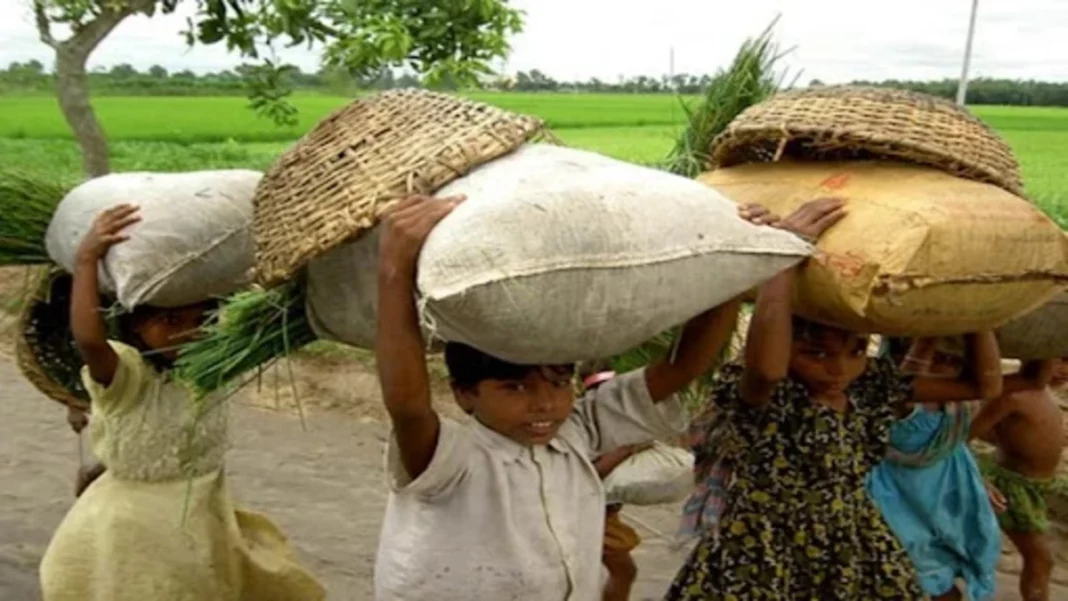Child Slave Associated With Chocolate Making Industries
We all know Chocolates as a luxurious and branded food item. Chocolates are produced from the cacao bean which is grown mostly in Tropical areas of Western Africa, Asia and Latin America. Ghana and its Ivory Coast produce more than 70% world’s cocoa and those are sold to the world’s largest chocolate companies.
In recent years, few journalists and organizations have come up with the widespread use of child slaves in some cases child labour as well in the cocoa farms of western Africa.
Since then the industries started to shut those harsh truths which were coming into the lights. They stopped accessing the reporters to visit those cocoa farms where human rights violation still takes place, but to circulate this information to the audience.
Three newspaper journalists were fired in 2010 by the Ivorian government. In 2004, the Ivorian first lady’s attendee was kidnapped and killed because the journalist covered the truth about the profitable income by the government by Cocoa industry.
These farms of West Africa supply cocoa to the international brands which revealed that those industries are thoroughly a part of child slavery, human trafficking, labour.
Related Article: Beti Bachao Beti Padhao- A Scheme That Cares For The Girl Child
The Worst Effect of Child Slaves
In Western Africa, cocoa is the basic necessity crop that is grown for export; Almost 60% of their revenue comes from their export. With the increase of chocolate industries, demand has also increased for cheap cocoa. On average a cocoa farmer earns less than $2 each day which is almost below the poverty line. As a result, they often use their child as labour to keep their prices nominal.
Most of the children of Western Africa start to work from a young age. Some children end up becoming cocoa farmers because they need work and by the influence of traffickers who tell them that the job pays well those children start to work. Some children are even sold to the traffickers by their relatives for the need of money, but they are unaware of the dangerous environment of the work and they also get a lack basic education. Those traffickers take those children and involve in cocoa farming for years and they cannot able to see their families also.
Most of the children working are of age between12 to 16. Many reporters found that even children of age 5 work there also. 40% of them are girls. Some stay for few months others end up staying for years.
A child typically starts their work from six in the morning and ends their work in the evening. They use chainsaws to clear the forests. Others climb cocoa trees to cut the pods of a bean using a machete which is a dangerous sharp tool and also violates international labour laws. They cut those pods and pack them in sacks. One of them told that those sacks were taller than them and if they don’t do the work in the time they were beaten.
In addition to these children are forced to use chemical sprays to keep those cocoa plants fresh. Those sprays they use without any face or body protectant.
Even after working so hard, they get to eat chap food like corn paste and get to sleep at the wooden plank.
To date, little progress has been formed to reduce child labour in the chocolate industries of Western Africa.
Does Cadbury follow the guidelines of Slave-Free Chocolates?
By the year 2005 deadline, the chocolate industries were not ready to implement these protocols and asked for two more years to prepare. Privately, many industries believed that this kind of certification bought by these protocols is unrealistic. Although cocoa is grown over millions of small farms in Western Africa, ensuring that all of these farms, mostly located deep into the bush, where child labour laws seemed impossible. Moreover, beans from numerous little farms were intermixed before shipment, it was very difficult to track those products by farms compiled with labour standards and those were not.
In the year 2008, a confrontation happened between U.S. government officers and the industry seemed to be imminent. Those who observed argued that this left Cadbury Company had done very much more to improve its supply chain, in a hazardous position.
Is it possible to make Child Labour-Free Chocolates?
Despite their role in contributing to child slavery, human trafficking, the chocolate industry did not take any significant steps to solve the problem. With 4442 crore rupees industry chocolate companies can come up with a solution to stop child labour and slave by paying cocoa farmers a good wage so that they can live well.
Each chocolate industry should develop, financially bear rescue, and rehabilitate children who are sold to cocoa farms. To date, these industries have given little effort to lessen child labour and let alone support survivors of child bondage. Hershey’s which is one of the largest chocolate makers of North America has not minutely given allegations of child survivors in its supply chain and they dross to release any information about from where chocolate is sourced. The lack of lucidity is the attribution of the chocolate industry, which has the assets to address and remove child bondage but frequently fails to remove action.
Recommendations or Takeaways
We, consumers, are an essential part of decreasing the chocolate industry’s injustices. Child labour and slavery in cocoa farms is very difficult to fully scrutinized because the serious abuses happen here across the world, but that doesn’t mean that our responsibility is less, since chocolate is a luxury but not a necessary item like foods.
Considering all of this and looking at this research, F.E.P. has made a list of vegan chocolates that can and cannot recommend also based on the cocoa sourcing.
Also Read: Indian Women Entrepreneurship: The Top Entrepreneurs of India


